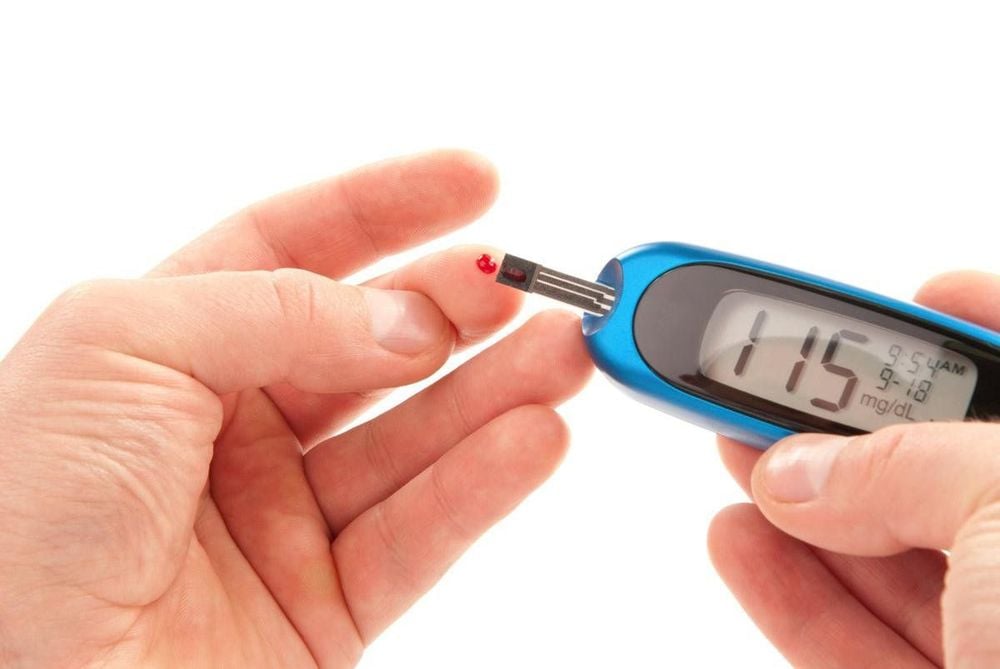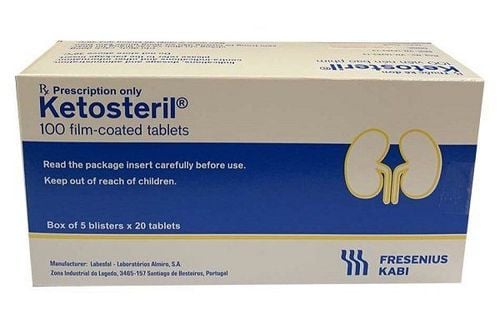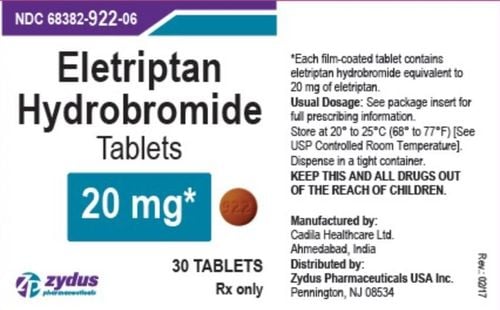This is an automatically translated article.
Metabolic syndrome includes a group of factors that potentially increase the risk of cardiovascular disease and diabetes. When these factors are combined, the risk of disease increases even more.
1. What is metabolic syndrome?
Metabolic syndrome is a term used to refer to a group of people who are at high risk of developing cardiovascular disease and diabetes in the future. According to research, about 20-30% of the population of developed countries suffers from this syndrome.
Causes of metabolic syndrome may be due to:
1.1. Metabolic syndrome is related to insulin resistance
Why insulin resistance appears is still unknown, may be due to genetic factors or other factors. Other factors from the surrounding environment should cause. Insulin is a hormone secreted by the pancreas with the function of bringing blood glucose into cells, the cells use glucose as a source of energy for activities. If insulin resistance occurs, glucose cannot enter cells as easily. As a result, the pancreas increases insulin secretion (often of poor quality) to help glucose get into the cells, but because insulin resistance is still present, it causes hyperglycemia but not enough to diagnose diabetes. If the body does not secrete enough insulin, it will cause diabetes. When blood sugar levels rise not to the diagnostic threshold, but can still cause harm to the body. This is called pre-diabetes.

Thừa cân béo phì là yếu tố nguy cơ gây hội chứng chuyển hóa
1.2 Risk factors for metabolic syndrome
Age: Risk increases with age, incidence < 10% by age 20, increasing to 40% by age 60. However, signs A precursor of the metabolic syndrome may be seen in young adults. Race: Asians and some countries such as Hispanics and Portuguese have a higher risk of metabolic syndrome than other races. Overweight, obesity: A condition when body mass index (BMI) > 23, abdominal obesity with an apple-shaped body increases the risk of metabolic syndrome. Family history of diabetes: The risk is higher in people with a family history of type 2 diabetes or a personal history of gestational diabetes. Other medical conditions that increase the risk include: High blood pressure, polycystic ovary syndrome, which affects the reproductive system and female sex hormones, people with polycystic ovary syndrome are also at risk. have higher rates of diabetes.

Các thành phần lipid khác nguy cơ tạo nên các mảng xơ vữa ở thành động mạc
2. Factors that easily cause metabolic syndrome
The combination of the following factors increases the risk of metabolic syndrome:
People with obesity in the abdomen, an apple-shaped body. Dyslipidemia: Disorders of lipids in the blood such as elevated triglycerides, low HDL-C, high LDL-C and other lipid components pose a risk of forming atherosclerotic plaques in the artery walls. Hypertension: High blood pressure or a person who has been diagnosed with high blood pressure. Insulin resistance or sugar intolerance: A condition in which the body cannot use insulin and glucose most effectively. Although insulin in the blood increases, it reduces the sensitivity to insulin at the cell surface, making the action of insulin less effective, sugar cannot enter the cells, causing hyperglycemia. Precoagulopathy: Disorders that increase blood clotting, such as elevated fibrinogen and PAI-1-activated plasminogen inhibitors, are high in the blood. Therefore, it increases the possibility of blood clot formation and reduces the ability to dissolve blood clots, which can easily lead to blood vessel blockage. Proinflammatory conditions: An elevated CRP test in the blood. This index may be related to lipid metabolism disorders that cause vasculitis, the CRP index helps assess the risk of cardiovascular disease in the future.
3. Diagnosis of metabolic syndrome
Metabolic syndrome is diagnosed using World Health Organization (WHO) criteria including:
Waist circumference ≥ 90cm in men or ≥ 80cm in women. Fasting hyperglycemia, with a fasting blood glucose index ≥ 110 mg/dL or having diabetes, even if blood glucose < 110 mg/dL) HDL-C reading < 1.0 mmol/L (40 mg/dl) in men or <1.3mmol/L (50 mg/dL) in women. Blood triglycerides ≥ 150 mg/dL. Blood pressure ≥ 130/85 mmHg or being diagnosed with hypertension. When 3 or more of the above factors are present, a diagnosis of metabolic syndrome has been made.

Hội chứng chuyển hóa được chẩn đoán qua chỉ số đường huyết lúc đói
4. What to do when you have metabolic syndrome?
Having metabolic syndrome means facing a high risk in the future for cardiovascular diseases, diabetes, and stroke. The risk is 2 times higher than in people without metabolic syndrome, so the primary goal is to reduce the risk of cardiovascular disease and type 2 diabetes.
Implement treatment to reduce important cardiovascular risk factors, including:
Lower blood cholesterol: Change your diet, reduce your intake of fatty foods, and increase your intake of green vegetables. Drug treatment if necessary. Treat hypertension if the patient has signs of hypertension. Diabetes treatment: Change your diet, reduce your tolerance to foods high in sugar, control your weight. Treat with medication if the patient has diabetes. Lose weight to achieve your ideal weight (BMI 18.5 – 22.9kg/m2) Increase physical activity, with the goal of being at least 30 minutes of moderate physical activity per day for at least 30 minutes per day. most days of the week. Change reasonable diet: Reduce eating fatty foods, sweet foods, stop smoking, limit alcoholic drinks. Increase your diet rich in vegetables and fruits. In general, many factors combine to increase the risk of metabolic syndrome. Good control of each factor reduces the risk of this syndrome and helps reduce the risk of cardiovascular disease, diabetes, and stroke in the future.
Vinmec International General Hospital with a system of modern facilities, medical equipment and a team of experts and doctors with many years of experience in medical examination and treatment, patients can rest assured to visit. examination and treatment of metabolic disorders at the hospital.
Please dial HOTLINE for more information or register for an appointment HERE. Download MyVinmec app to make appointments faster and to manage your bookings easily.
MORE
What is a gene? What is a genetic disorder? The dangers of metabolic syndrome What diseases can blood tests show you're at risk for?













